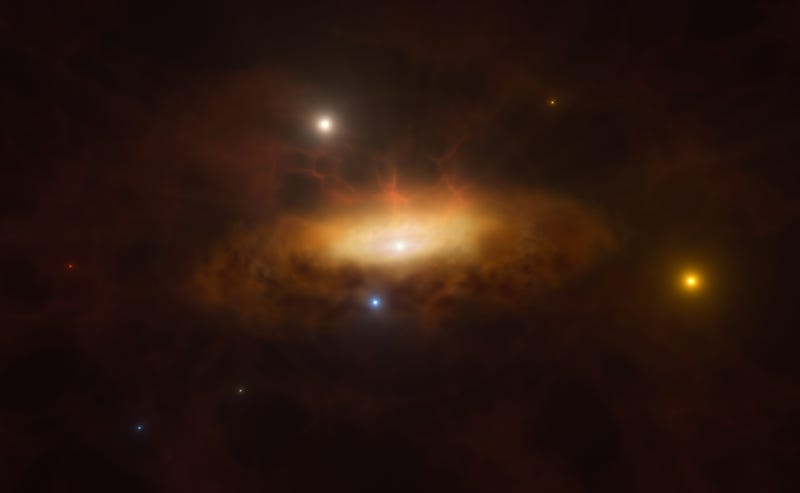Five years ago, a galaxy 300 million light-years away got a lot brighter in telescopes, radiating ultraviolet, optical, and infrared light out into space. This year, the resurgent galaxy started emitting X-rays, indicating that its initial brightening was really just a warmup.
For the two decades before 2019, the galaxy was the same level of faintness in the night sky. According to a team of astronomers, the recent wind-up could be due to a supermassive black hole coming to life at the galaxy’s core. The team’s research is accepted for publication in Astronomy & Astrophysics.
“This behaviour is unprecedented,” said Paula Sánchez Sáez, a researcher with the Millennium Institute of Astrophysics in Chile and lead author of the paper, in a European Southern Observatory release. “Regardless of the nature of the variations, [this galaxy] provides valuable information on how black holes grow and evolve.”

The galaxy is SDSS1335+0728 (and that’s just its nickname—seriously!). Its initial brightening was spotted by the Zwicky Transient Facility telescope, which puts out an alert on an object when a five-sigma detection is made of a source’s difference image. The researchers concluded that the brightness variations indicate a black hole, roughly one million times the mass of the Sun, is becoming active, brightening its surroundings as it consumes material. The object only began emitting X-rays in February, indicating that the black hole is even more awake now than when it began to stir.
“These giant monsters usually are sleeping and not directly visible,” said study co-author Claudio Ricci, from the Diego Portales University, in the same release. “In the case of SDSS1335+0728, we were able to observe the awakening of the massive black hole, [which] suddenly started to feast on gas available in its surroundings, becoming very bright.”
The team has yet to conduct follow-up observations to clarify the nature of the event. While the data strongly suggests the team saw the black hole’s activation, it’s possible that the event is a rare type of tidal disruption, in which a nearby passing object is pulled apart by the black hole’s gravitational force, lighting up the surrounding cosmos. If it is a tidal disruption, it’s the longest and faintest yet seen.
Instruments like the Very Large Telescope and its successor, the Extremely Large Telescope, could see more light from these rare, variable events. At the same time, the Vera Rubin Observatory’s LSST Camera will soon debut, imaging all of the southern sky continuously. It will capture variable events like the recent furor in SDSS1335+0728, but also transient—which is to say, even more fleeting—events, which will help reveal the secrets of the cosmos.
